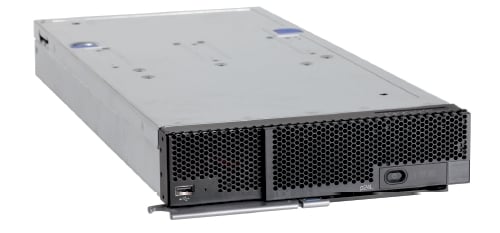This article is more than 1 year old
IBM fires Power-powered Penguins at x86's weak spots
Linux-only servers to gobble piece of a $10bn pie
Same iron, different firmware and pricing
There are two different PowerLinux machines that IBM is bringing out today, and Handy says that there are "three more coming right behind these". They are based on existing Power7-based servers.
The first machine is the PowerLinux 72R server, a 2U rack-mounted box that can be equipped with an eight-core Power7 processor running at either 3.3GHz or 3.55GHz. The latest Xeon E5-2600 processors from Intel have eight cores as well, but only two threads per core compared to four threads with the Power7 chips. This matters for thread-hungry jobs, such as Java application servers and virtual machines and databases, just to name two.
The machine is configured with a base 8GB of DDR3 memory, expandable to 256GB, and has room for six disk or SSD drives. It also has five PCI-Express 2.0 x8 slots and four Gigabit Ethernet ports. The latest Xeon E5-2600 processors support PCI-Express 3.0 slots and also offer 10 Gigabit Ethernet ports on the motherboard in a lot of server designs, and for a lot of workloads (database clustering or parallel supercomputing, for example) this will matter.
This PowerLinux 72R machine is based on the Power 730 server that Big Blue rolled out in August 2010 and then enhanced last October.

IBM's PowerLinux FlexSystem p24L server node
The second server is the Flex System p240L, which is electronically identical to the Flex System p260 server that IBM announced two weeks ago as part of its PureSystems converged and cloudy boxes. Again, the firmware in this half-width server node does not allow it to run AIX or IBM i.
The p240L can be equipped with a six-core Power7 chip running at 3.7GHz or an eight-core chip running at either 3.2GHz or 3.5GHz. It is a two-socket box, like the PowerLinux 72R, and comes either one or two processors installed.
This server node has 16 DDR3 memory slots and supports up to 256GB of memory across those two processors. It also includes two internal 2.5-inch disk or 1.8-inch SSD bays that are attached to the node lid and that tuck into the space above the main memory on the system board. There wasn't room to put the drives in the front as IBM does with its Flex System x240 server nodes for the PureSystems machines, which are based on the Xeon E5-2600 processors.
The p24L node has two PCI-Express x8 slots and two mezzanine cards that hook into the midplane on the Flex System chassis and deliver InfiniBand, Ethernet, and Fibre Channel connectivity at various speeds to the server node.
For a comparable setup for running virtualized server instances, Handy says that four PowerLinux 72R servers with the 3.55GHz Power7 chips running RHEL 6 and PowerVM 2.2 will be able to do the work of five HP DL380 G8 servers using Intel's 2.4GHz Xeon-2665 processor with RHEL 6 and VMware's vSphere 5.0 Enterprise virtualization stack. They will also be able to do so at a 33 per cent lower total cost of acquisition over three years. HyperThreading and SMT were both enabled on both machines, by the way.
As far as targets go, the PowerLinux machines are aimed at three of them. First, companies that mainly used the apps that are built into the RHEL and SLES distributions, which is a little more than half of the enterprise Linux shops out there in the world, according to Handy.
The other target is customers who want to run applications stacks like SAP on top of Linux. Oracle doesn't support its 11g R2 database on Power processors running Linux (it does on AIX), so this could be a problem for some shops that have standardized on Oracle databases. IBM's DB2 will run on PowerLinux machines, as will EnterpriseDB's variant of the PostgreSQL database.
And the final target is big data, of course. IBM has ported its InfoSphere Streams streaming server to the PowerLinux machines, and will have its InfoSphere BigInsights distribution of Hadoop running on the machines by June 15.
The cut-price PowerVM for PowerLinux hypervisor offers micropartitioning, which allows each core in the box to have as many as 10 logical partitions as well as the Virtual I/O Server virtualized disk and optical drive server, active memory sharing across partitions, live partition mobility between physical machines, and other features commonly bundled in the top-end PowerVM Enterprise Edition hypervisor for regular Power Systems machines.
IBM first sold cut-priced Linux-only Power servers back in September 2004 with the OpenPower 720, a four-socket machine based on dual-core Power5 processors and also sporting RHEL or SLES. The following spring, IBM put out a two-socket machine called the OpenPower 710. IBM has also dabbled off and on with Linux-only mainframes, the last of which were announced back in December 2009. ®
